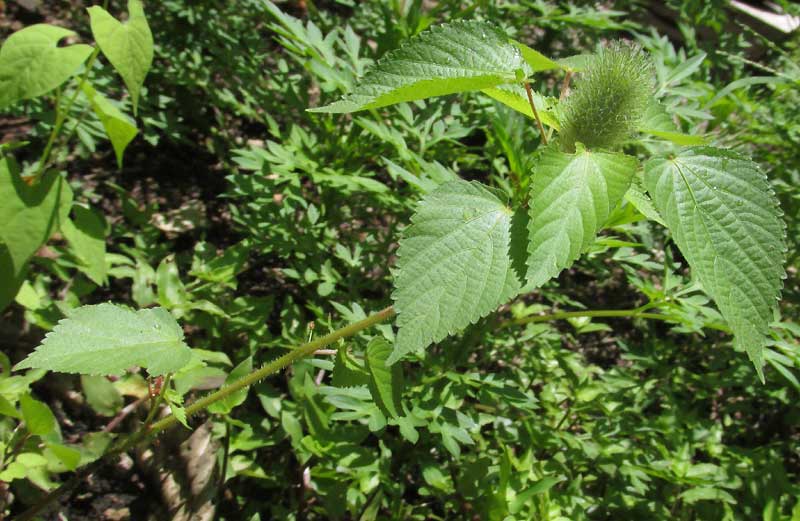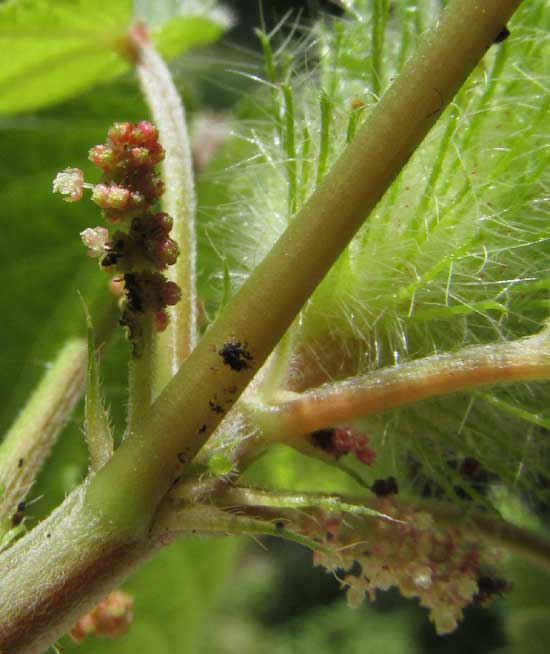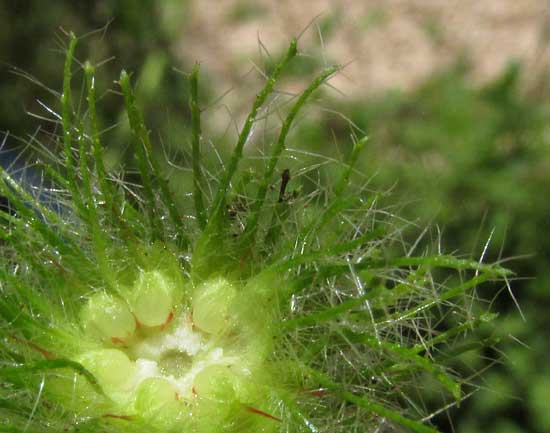Excerpts from Jim Conrad's
Naturalist Newsletter
from the August 7, 2016 Newsletter issued from Hacienda Chichen Resort beside Chichén Itzá Ruins; limestone bedrock; elevation ~39m (~128ft), N20.675°, W88.569°; central Yucatán state, MÉXICO
"LITTLE SHEEP" ACALYPHA/ COPPERLEAF
Right beside the hut door, next to the bed of cosmoses, an herbaceous weed developed flowers so interesting that I was glad I hadn't pulled it up. You can see it below:

What's most interesting is the soft-fuzzy, green, oval item atop the plant. It's obviously a flowering head, but where are the flowers' parts? Immediately below the fuzzy head something shows up that begins to explain things, seen below:

Several times we've seen short flower spikes like these, bearing flowers consisting of nothing but inconspicuous calyxes subtending a few pale stamens. The two short spikes in the picture bear unisexual male flowers exactly like the male spikes on the Acalypha we looked at last week. Therefore, the fuzzy ball at the plant's top must be a short, congested spike bearing female flowers. If this is an Acalypha, the green fuzz must be made of long, slender teeth of leafy bracts subtending the female flowers, and that proves to be exactly the case when we snip off the top of the female spike's head and look at female flowers lined up next to one another, shown below:

The pale green, oval items in a circle are maturing ovaries. Below each ovary arises a bract with long, slender lobes, the lobes bearing conspicuous, pale, stiff hairs. This is ACALYPHA ALOPECURIOIDES, without a good English name, but one Spanish name, Borreguillo, is so nice that it deserves to inspire the English name "Little Sheep," for that's what borreguillo means. Other Spanish names regard the plant as a Little Cat (Gatito) or Cat Tail (Cola de Gato).
Most weeds are native to other places than where they're weedy, but "Little Sheep" is native Mexican, found from the southernmost US where it's an invasive weed, south through the Caribbean area and Central America into northern South America.
The online Biblioteca Digital de la Medicina Tradicional Mexicana, which gives its name as Hierba del Cáncer, or Cancer Herb, mentions it as useful for preventing cancer, not curing it. Otherwise, traditionally in Mexico it's been used against asthma, wounds, certain tumor-like skin growths, acne, foot infections, diarrhea, urinary problems, ulcers and of course snakebite.